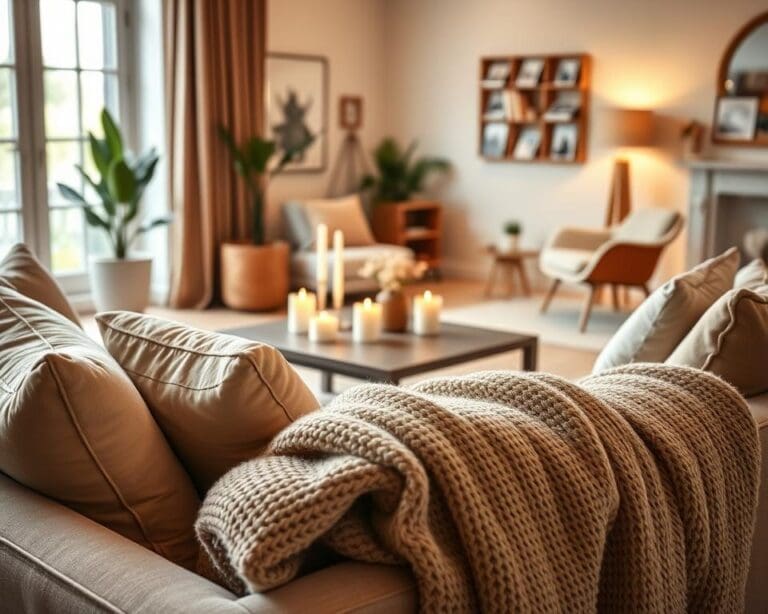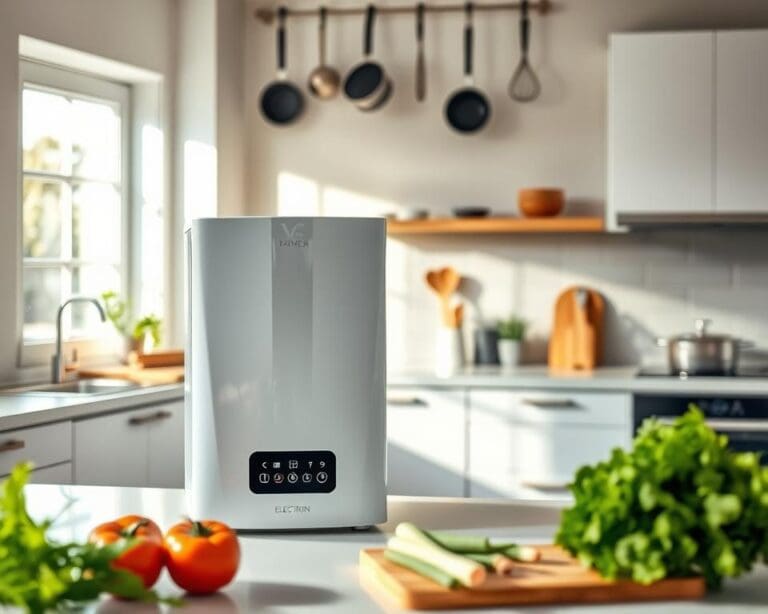In today’s fast-paced world, it’s easy to get caught up in the hustle and bustle of daily life. However, simplicity can be a powerful antidote to the stress and chaos that often accompany it. By embracing a more minimalist approach, individuals can cultivate a deeper sense of happiness and well-being.
Embracing minimalism is not just about getting rid of stuff; it’s a mindset shift that allows people to focus on what truly adds value to their lives. By simplifying their surroundings and streamlining their daily routines, individuals can create space for what truly brings them joy and fulfillment.
Key Takeaways
- Simplifying your life can lead to a greater sense of happiness and well-being.
- Adopting a minimalist mindset can help you focus on what truly adds value to your life.
- By streamlining your daily routines, you can create space for what brings you joy and fulfillment.
- Embracing simplicity can be a powerful antidote to stress and chaos.
- Minimalism is a journey, not a destination, and it’s about finding what works best for you.
The Essence of Simplicity
The essence of simplicity lies not in having less, but in making room for what truly matters. In a world where complexity often equates to success, embracing simplicity can seem counterintuitive. Yet, it’s in simplicity that we find a pathway to a more intentional, meaningful life.
Defining True Simplicity in Modern Life
True simplicity in modern life is about more than just decluttering or minimalism; it’s a mindset that values clarity and purpose. Simplicity is not about rejecting the advancements of modern life but about filtering out the unnecessary to focus on what brings joy and fulfillment.
It’s a deliberate choice to live with less distraction, more intention, and a deeper connection to one’s values and surroundings.
The Difference Between Simple and Easy
While simplicity and ease are often used interchangeably, they represent different concepts. Simplicity refers to the quality of being straightforward and uncomplicated, whereas ease pertains to the lack of difficulty or effort.
Living simply doesn’t always mean it’s easy; in fact, simplifying one’s life can sometimes require significant effort, especially in a culture that often celebrates complexity and busyness. However, the ease that comes from simplicity is a result of removing the unnecessary, allowing for a smoother, more streamlined life.
Why We Crave Complexity
The craving for complexity is a multifaceted phenomenon, rooted in both cultural and psychological factors. In a world where consumerism is rampant, the desire for more possessions and experiences is constantly fueled.
The Cultural Push Toward More
Our society often equates success with the accumulation of material goods and the complexity of our lives. Consumerism plays a significant role in this narrative, encouraging us to buy more, experience more, and in the process, complicating our lives unnecessarily.
- The media and advertising industries perpetuate the idea that more is better.
- Social media platforms showcase the highlight reels of others’ lives, fostering comparison and dissatisfaction.
- The culture of disposability and constant innovation keeps us in a cycle of consumption.
Breaking the Cycle of Consumption
To break free from the cycle of consumption, we must first understand its drivers. Recognizing the cultural and psychological triggers that lead us to crave complexity is crucial.
Recognizing Enough
One of the first steps is to recognize when we have enough. This involves a personal assessment of our needs versus our wants and understanding that true fulfillment doesn’t necessarily come from material possessions.
Creating New Metrics for Success
We need to redefine what success means to us. Creating new metrics for success that are not based on material wealth or the complexity of our lives can help us shift our focus towards what truly adds value to our existence.
- Measure success by the quality of relationships and experiences.
- Focus on personal growth and well-being.
- Cultivate a sense of gratitude for what we already have.
By adopting these new metrics and recognizing when we have enough, we can begin to break the cycle of consumption and simplify our lives, leading to a more fulfilling existence.
The Science Behind Geluk in Eenvoud Vinden
The connection between simplicity and wellbeing is rooted in science, revealing a path to a more fulfilling life. As we navigate the complexities of modern living, understanding the scientific basis for simplicity’s benefits can be a powerful guide.
Research on Simplicity and Wellbeing
Studies have shown that simplicity can have a profound impact on our wellbeing. By simplifying our surroundings and reducing clutter, we can create an environment that fosters relaxation and reduces stress.
Stress Reduction Through Simplification
Simplification can lead to stress reduction by minimizing the stimuli that demand our attention. As Joshua Becker, a minimalist advocate, notes, “Simplifying our lives requires us to be intentional about what we allow into our space and our lives.” This intentionality can lead to a more peaceful existence.
Decision Fatigue and Mental Clarity
Simplifying our choices can also reduce decision fatigue, a state of mental exhaustion caused by making too many decisions. By streamlining our options, we can preserve mental clarity and make more thoughtful decisions. As
“The most important thing is to live simply, so that others may simply live.” –
Psychological Benefits of Minimalism
Minimalism, a lifestyle that emphasizes simplicity, has been linked to various psychological benefits, including reduced anxiety and increased happiness. By focusing on what is truly important, individuals can cultivate a greater sense of purpose and fulfillment.
Embracing simplicity is not just about removing clutter; it’s about creating a life that is rich in experience and connection. As we simplify, we make room for what truly adds value to our lives, leading to a more contented and fulfilling existence.
Simplifying Your Physical Space
Embracing simplicity in our living spaces can be a powerful step towards achieving inner peace. A cluttered environment can weigh heavily on our minds, making it difficult to relax and feel at ease. By simplifying our physical space, we can create a haven that nurtures both body and soul.
Decluttering Strategies That Actually Work
Decluttering can seem like a daunting task, but with the right strategies, it can be a liberating experience. Here are some effective methods to get you started:
- The 4-Box Method: Sort items into four boxes: keep, donate, sell, and discard. This simple categorization makes decision-making easier.
- Start Small: Begin with one area or room at a time to avoid feeling overwhelmed.
The 4-Box Method
The 4-Box Method is a straightforward decluttering technique that involves sorting items into four categories. It’s an effective way to tackle clutter and make decisions about what to keep and what to let go of.
Maintenance Systems for Lasting Order
Once you’ve decluttered, maintaining your space is key. Implementing a maintenance system, such as scheduling regular tidying sessions, can help keep your home organized and clutter-free.
Creating a Home That Nurtures Peace
A simplified home is not just about getting rid of clutter; it’s about creating a space that promotes peace and wellbeing. Consider the following:
- Minimalist Decor: Opt for simple, uncluttered decor that promotes a sense of calm.
- Natural Elements: Incorporate natural elements, such as plants or a water feature, to enhance the serene atmosphere.
By simplifying your physical space and implementing effective decluttering strategies, you can create a home that nurtures peace and contributes to your overall happiness.
Digital Minimalism: Finding Balance in a Connected World
As we navigate the complexities of modern life, embracing digital minimalism can be a pathway to serenity. In a world where technology is omnipresent, it’s easy to feel overwhelmed by the constant stream of notifications, emails, and social media updates. Digital minimalism is about reclaiming control over our digital lives, allowing us to focus on what truly matters.
Taming Technology Overload
The first step towards digital minimalism is acknowledging the extent of our technology use. We must recognize how our devices and apps consume our time and energy. Conducting a digital audit can help identify areas where we can cut back. This involves reviewing the apps we use, the notifications we receive, and the time spent on digital devices.
- Identify and uninstall unused apps.
- Limit notifications to only the most essential apps.
- Set time limits on device usage.
Creating Healthy Digital Boundaries
Establishing healthy digital boundaries is crucial for maintaining a balance between our digital and physical lives. This involves setting clear rules and practices that promote digital wellbeing. For instance, implementing device-free zones in the home or during meals can significantly reduce digital overload.
Digital Detox Practices
One effective way to reset our digital habits is through digital detox practices. This can range from taking a day off from digital devices to participating in digital-free retreats.
“A digital detox is not about giving up technology entirely, but about being more intentional with its use.”
Such practices help us reconnect with the physical world and reduce our dependency on digital media.
Curating Your Information Diet
Just as a healthy physical diet involves consuming the right foods, a healthy digital diet involves curating the information we consume. This means being selective about the sources of information we follow, avoiding clickbait, and limiting exposure to negative or toxic content online. By being more mindful of our digital intake, we can reduce information overload and enhance our mental clarity.
- Follow credible sources of information.
- Avoid engaging with sensational or provocative content.
- Regularly review and adjust your social media feeds.
Simplifying Relationships and Social Commitments
Simplifying our social interactions and commitments is not just about having less to do, but about making room for what truly matters. In a world where social obligations can quickly become overwhelming, it’s essential to reevaluate our relationships and commitments to ensure they align with our values and priorities.
Quality Over Quantity in Relationships
Focusing on quality over quantity in our relationships means investing in people who support and uplift us. It’s about having meaningful connections rather than a large network of acquaintances. As Brené Brown once said, “The antidote to shame is not self-esteem, but rather, connection to others.” This connection is rooted in the quality of our relationships.
“Surround yourself with people who are going to lift you up and make you better, not drain your energy and make you worse.”
Learning to Say No with Grace
Learning to say no is a crucial skill for simplifying our social commitments. It’s about setting healthy boundaries without feeling guilty. Saying no to something that doesn’t serve us means saying yes to ourselves and our priorities.
Setting Boundaries Without Guilt
Setting boundaries is not about being selfish; it’s about being clear about what we can handle. It’s essential to communicate our boundaries graciously and firmly, ensuring that we maintain our emotional and mental well-being.
Creating Space for What Truly Matters
By simplifying our relationships and social commitments, we create space for what truly adds value to our lives. This could mean pursuing hobbies, spending time with loved ones, or simply enjoying quiet moments alone. As we simplify, we make room for growth and fulfillment.
In conclusion, simplifying our relationships and social commitments is a journey that requires patience, self-reflection, and a willingness to set boundaries. By focusing on quality over quantity and learning to say no with grace, we can create a more meaningful and less cluttered social life.
Financial Simplicity and Contentment
Achieving financial simplicity is not just about reducing expenses; it’s about cultivating a mindset that values contentment over consumption. In today’s consumer-driven society, it’s easy to get caught up in the cycle of buying and accumulating possessions. However, true financial simplicity lies in understanding that wealth is not just about the money you have, but about the freedom you enjoy.
As we navigate our financial lives, it’s crucial to recognize the impact of consumer culture on our spending habits. The constant bombardment of advertisements and the pressure to keep up with the latest trends can lead to a never-ending cycle of consumption.
Breaking Free from Consumer Culture
Breaking free from consumer culture requires a conscious effort to redefine what we value and to resist the urge to constantly consume. It’s about recognizing that true happiness and fulfillment come from living a life that is aligned with our values, not just from accumulating possessions. By adopting a more mindful approach to spending, we can begin to break free from the grip of consumer culture.
One of the key strategies in breaking free from consumer culture is to adopt mindful spending practices. This involves being fully present and aware when making purchasing decisions, considering whether they align with our true needs and values.
Mindful Spending Practices
- Pause before buying to assess if the purchase is necessary.
- Consider the long-term value of the item.
- Avoid impulse buys.
By incorporating these practices into our daily lives, we can cultivate a healthier relationship with money and possessions.
Finding Abundance in Less
Finding abundance in less is about shifting our perspective to appreciate and find contentment in what we already have. It’s a journey that involves letting go of the notion that more is always better and embracing the beauty of simplicity.
“The richest man is not he who has the most, but he who needs the least.” – Unknown
This mindset allows us to find abundance not in the accumulation of wealth, but in the simplicity of life.
Redefining Wealth on Your Own Terms
Redefining wealth involves looking beyond the conventional measures of financial success. It’s about understanding that true wealth encompasses not just financial stability, but also emotional well-being, meaningful relationships, and a sense of purpose. By redefining what wealth means to us personally, we can begin to live more intentionally and find contentment in our financial lives.
In conclusion, financial simplicity is a journey that requires patience, self-reflection, and a willingness to challenge the status quo. By breaking free from consumer culture, adopting mindful spending practices, and redefining wealth, we can achieve a more contented and financially simple life.
Mindfulness: The Path to Present Moment Joy
The path to happiness often lies in being mindful of our thoughts, feelings, and surroundings. Mindfulness is the practice of being fully present and engaged in the current moment, while cultivating a non-judgmental awareness of one’s experiences. By doing so, we can break free from the cycle of constant distraction and find joy in the simplicity of life.
Simple Mindfulness Practices for Daily Life
Incorporating mindfulness into daily life can be simpler than you think. It starts with small, intentional actions that help you stay grounded in the present. For instance, you can begin with one-minute meditation techniques to calm your mind and focus on your breath.
One-Minute Meditation Techniques
One effective way to practice mindfulness is through short meditation sessions. Take a minute to sit comfortably, close your eyes, and focus on your breathing. Notice the sensation of the air entering and leaving your nostrils, and gently bring your mind back when it wanders. This simple practice can be a powerful tool for reducing stress and increasing mindfulness.
Bringing Awareness to Routine Activities
Another mindfulness practice involves bringing awareness to your daily activities. For example, when eating, pay attention to the taste, texture, and smell of your food. Chew slowly and savor each bite. This mindfulness practice can transform mundane tasks into moments of joy and appreciation.
Cultivating Gratitude for What You Have
Cultivating gratitude is a vital aspect of mindfulness that helps us appreciate what we have, rather than focusing on what we lack. By reflecting on the things we’re thankful for, we can shift our perspective and find contentment in the present moment. Take a moment each day to write down three things you’re grateful for, no matter how small they may seem.
By incorporating these mindfulness practices into your daily life, you can cultivate a deeper sense of joy and appreciation for the world around you. As you continue on this path, you’ll find that mindfulness becomes a powerful tool for navigating life’s challenges with greater ease and clarity.
Stories of Transformation Through Simplicity
The decision to simplify one’s life can lead to unexpected and welcome transformations. As individuals embark on this journey, they often discover newfound freedom and a deeper sense of purpose.
Real-Life Examples of Simplified Living
Simplified living is not just a theoretical concept; it’s a reality for many who have made the conscious decision to reevaluate their priorities and simplify their lives.
From Corporate Burnout to Balanced Living
Consider the story of Sarah, a former corporate executive who found herself burnt out from years of high-stress work and a demanding lifestyle. She decided to simplify her life by switching to a less demanding job, which allowed her to focus on her health and personal relationships. “I was running on empty,” she recalls. “Simplifying my life gave me the chance to recharge and rediscover what truly mattered.”
Finding Purpose Through Downsizing
For John, downsizing his home and possessions was a liberating experience. “I used to think that my identity was tied to the things I owned,” he says. “But letting go of all that clutter allowed me to find my true purpose and live more intentionally.”
Lessons from Those Who Chose Less
One of the most significant lessons from those who have chosen a simpler path is the importance of living intentionally. As minimalism expert Joshua Fields Millburn notes, “The key is not to have less, but to have what you need in order to live a meaningful life.”
“Simplicity is not just about getting rid of stuff; it’s about making room for what’s truly important.”
These stories and lessons serve as powerful reminders that simplicity is a journey worth undertaking. By embracing simplicity, individuals can experience profound transformations that enhance their overall wellbeing and quality of life.
Conclusion: Embracing the Journey to Simplicity
As we navigate the complexities of modern life, finding happiness in simplicity can be a powerful antidote to stress and discontent. Throughout this article, we’ve explored the essence of simplicity, its benefits, and practical steps to simplify various aspects of our lives.
Embracing the simplicity journey requires a willingness to let go of the unnecessary and focus on what truly adds value to our lives. By simplifying our physical space, digital lives, relationships, and financial commitments, we can create a more peaceful and fulfilling existence.
Embracing change is a crucial part of this journey. It involves being open to new experiences, letting go of attachments to material possessions, and cultivating mindfulness in our daily lives. As we embark on this path, we can discover a sense of freedom and contentment that may have eluded us in our more complicated past.
As you begin or continue your simplicity journey, remember that it’s a personal and ongoing process. Be patient, stay committed, and celebrate your progress along the way. By doing so, you’ll be well on your way to finding geluk in eenvoud vinden – happiness in simplicity.








